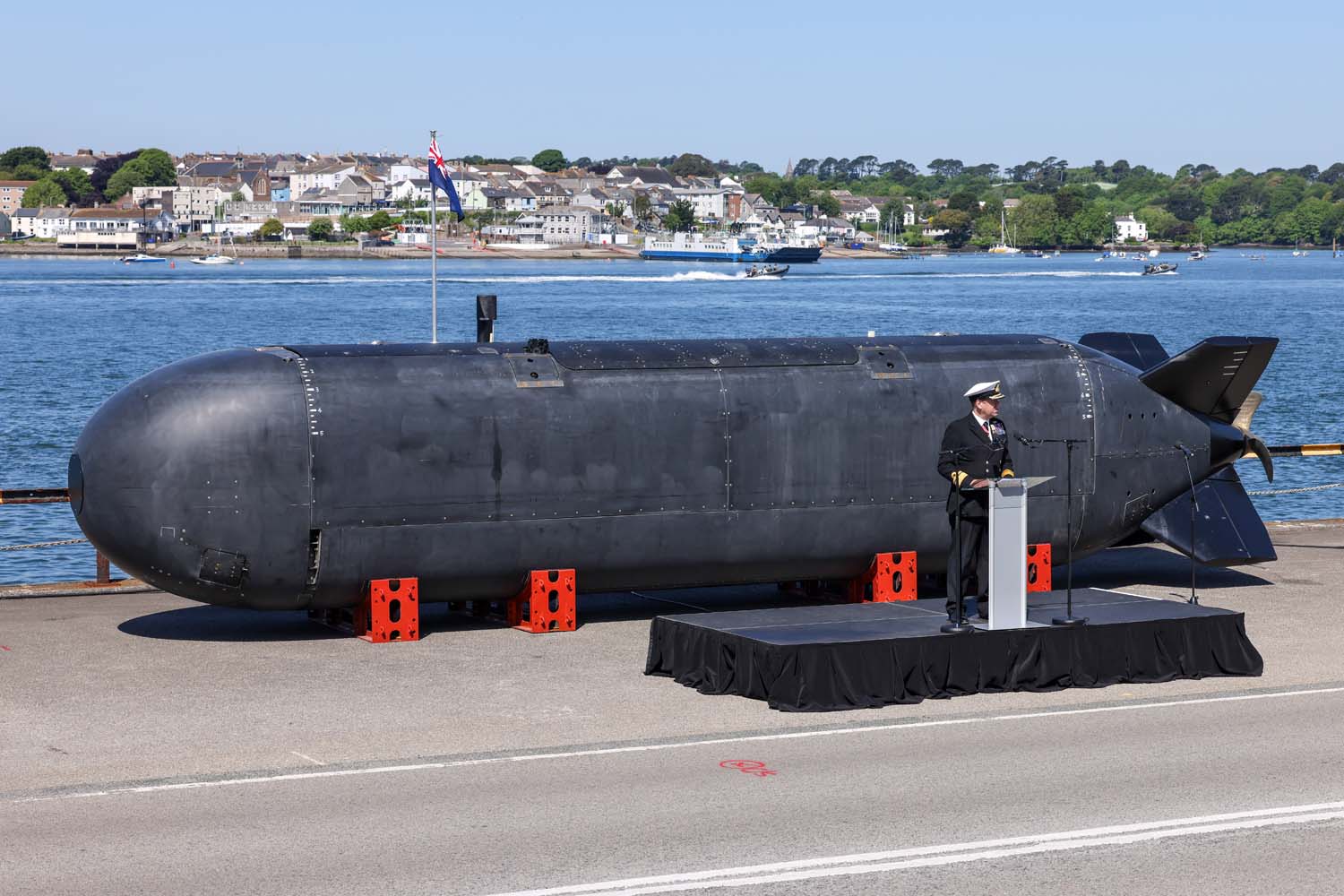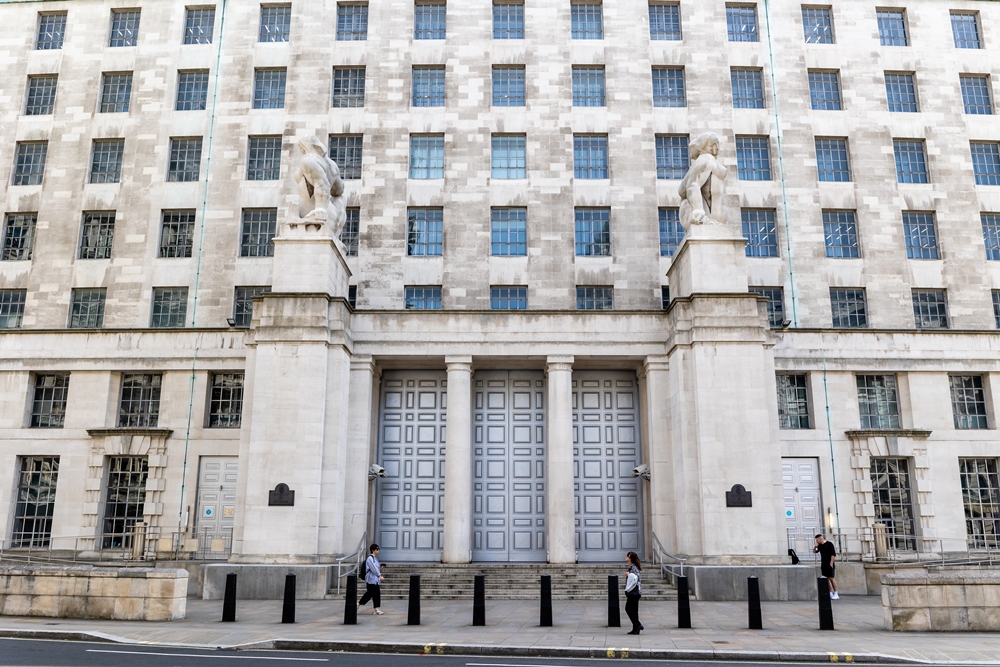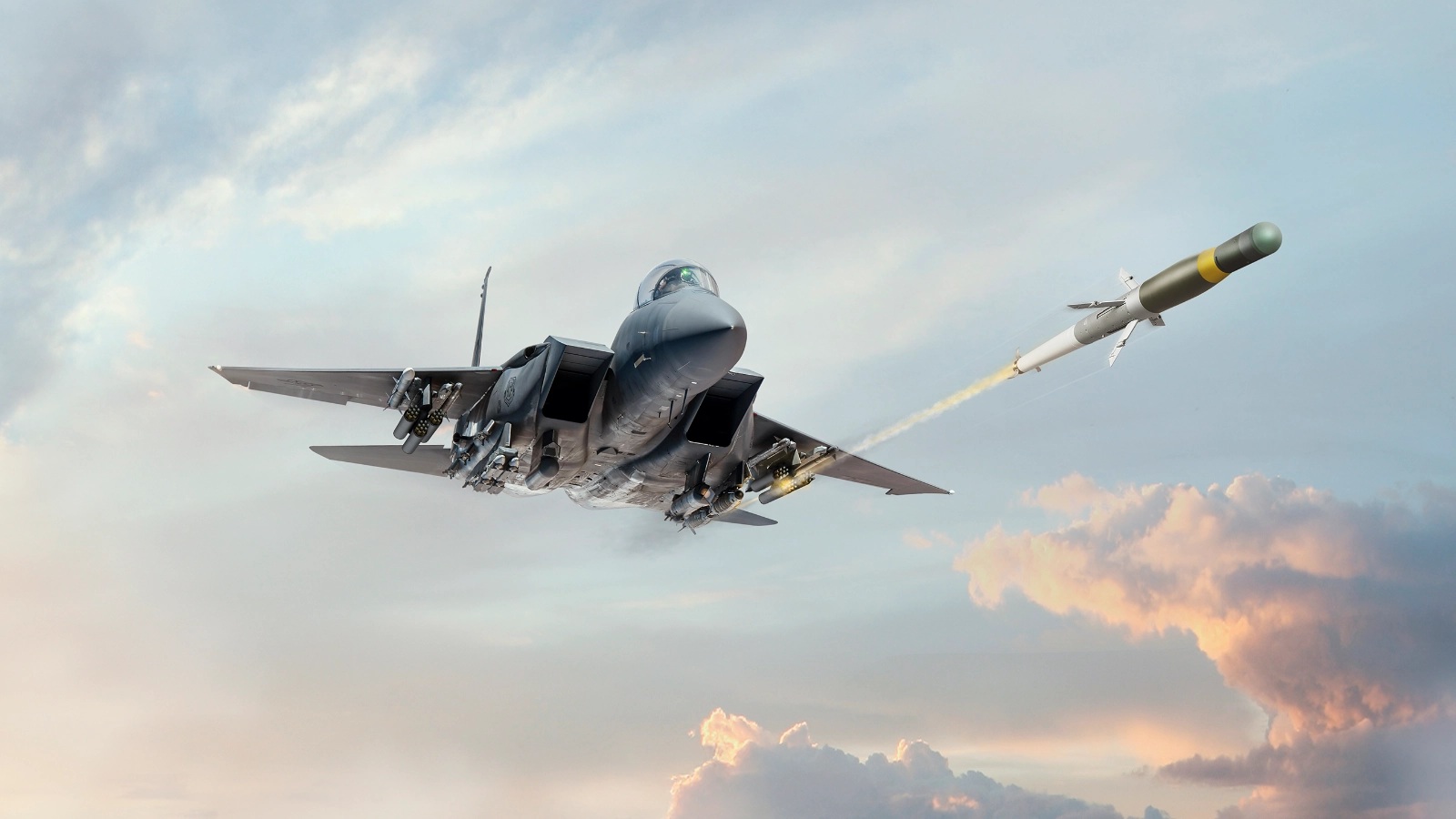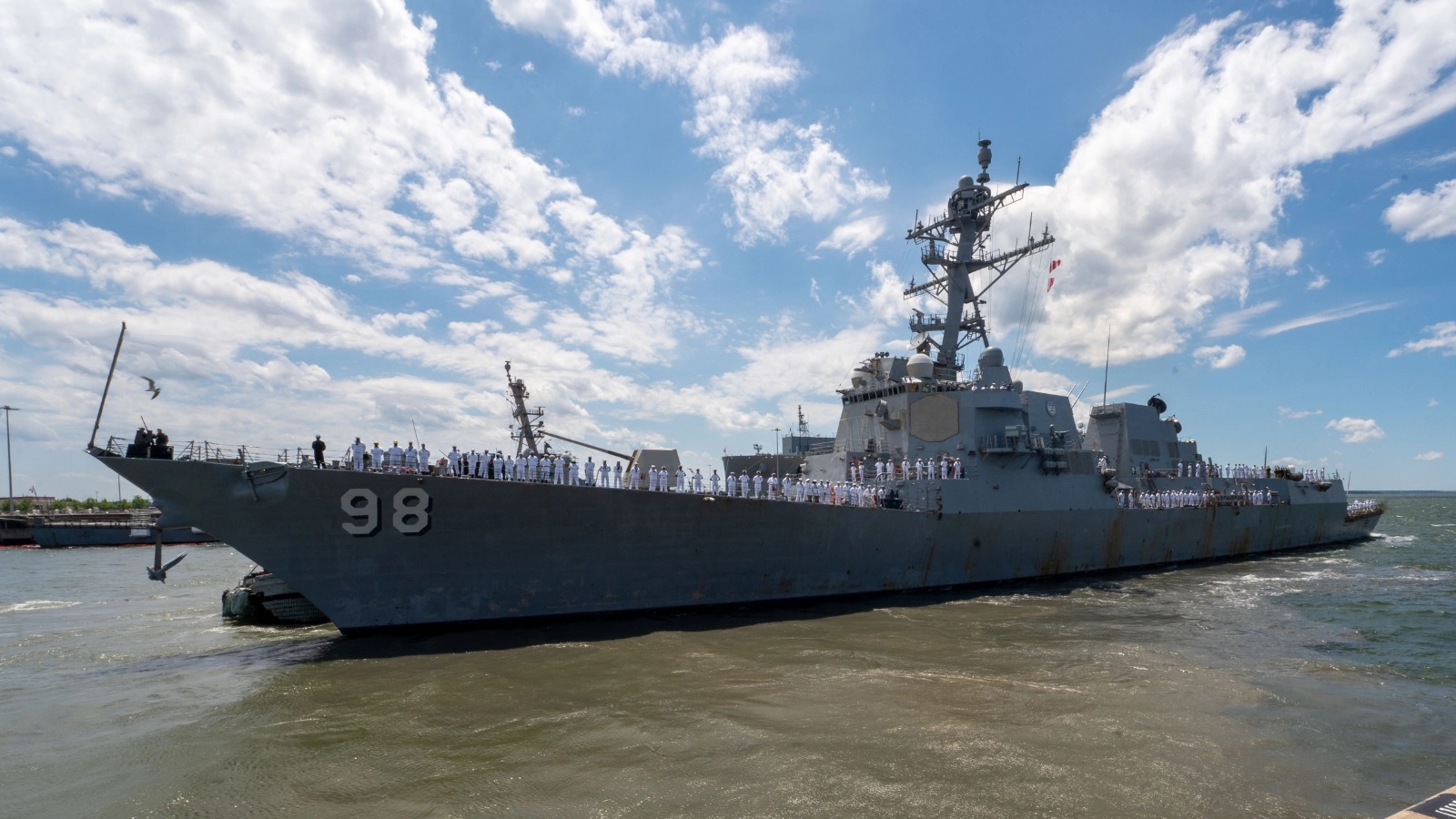Huge section of HMS Queen Elizabeth leaves shipyard

Above:
Employees at BAE Systems' Govan shipyard watch as the aft section of hull makes its way past new destroyer HMS Duncan in the final stages of completion at Scotstoun.
Courtesy BAE Systems 2012
This gigantic segment - officially known as Lower Block 04 and weighing 11,300 tonnes - was towed on a barge down the Clyde on Sunday to begin a 1,230-nautical-mile (2,278km) journey around the south of England to Rosyth.
Originally the shorter route around the north of Scotland had been planned. However, bad weather in the north of the UK forced reconsideration and the route was changed to around the south of England and up to Rosyth through the North Sea.
Employees at BAE Systems' Govan shipyard, where the section was pieced together, and members of the public watched as a large seagoing barge carrying the aft section of hull made its way along the Clyde, past new destroyer HMS Duncan in the final stages of completion at Scotstoun, and under the Erskine Bridge.
Travelling around the south coast of England, the block - the final section of the hull to be finished - is scheduled to arrive at Rosyth early next week where it will be joined to the rest of HMS Queen Elizabeth.
Lower Block 04 is 86 metres long, 40 metres wide and 23 metres high and contains the carrier's two main engine rooms, the sick bay and quarters for some of the 1,500 sailors and air group personnel who will serve in her later this decade.
Defence Secretary Philip Hammond said: "Our next generation of aircraft carriers is on track, with HMS Queen Elizabeth due to begin sea trials in 2017 and flight trials from her deck using our Lightning II fast jets in 2018. We are regenerating our carrier strike capability with the largest aircraft carriers Britain has ever had and fifth-generation stealth jets.
"Scotland has a world class shipbuilding industry that has benefited to the tune of around £1.3bn from the Queen Elizabeth Class carriers. More than 2,000 people work on the carriers at Rosyth, with a further 2,000 on the Clyde."
BAE Systems' Angus Holt, in charge of block delivery for the Queen Elizabeth Class, said: "There's a real sense of pride here in the yard and across the Aircraft Carrier Alliance.
"This is the final hull section of HMS Queen Elizabeth and her arrival in Rosyth will mark an exciting and significant phase in the programme when we will really see the immense scale of the nation's flagships."
The giant block was edged out of the firm's shipbuilding hall at Govan a fortnight ago and prepared for its journey by being firmly secured to the seagoing barge. The carrier team closely monitored weather forecasts to plan a smooth journey to the east coast.
On its arrival in the Firth of Forth, the block will be floated off the specialist barge and moved into position in dry dock, ready to join the other sections already in place.
Around 250 employees from the Clyde will follow the block to Rosyth where they will work in partnership with Babcock to complete the assembly phase.
Meanwhile, production on both Lower Blocks 03 and 04 of Queen Elizabeth's sister ship, HMS Prince of Wales, continues to progress at Govan, while the aft island for the first ship is under construction at the company's Scotstoun yard.
Half-a-dozen yards around the UK are involved in the carrier project, with some 10,000 people directly or indirectly involved in building sections and parts or providing equipment for the Queen Elizabeth and the Prince of Wales.
With the Olympics now over, the construction of the aircraft carriers is the biggest and most complex engineering project in the UK.












